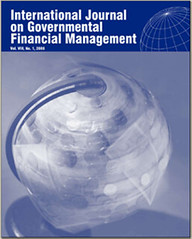By Doug Hadden, VP Products, FreeBalance.
I presented an overview of the top ten trends in Government IFMIS last year at the May ICGFM conference.
What has changed in the past year?
Trend 1: Market Consolidation
* The market continues to consolidate. The large acquisitions of Hyperion, Business Objects and EDS points to this continuing trend.
Trend 2: Open Source Software
* Free and Open Source Software (FOSS) adoption continues, particularly in middleware.
Trend 3: Commoditization of the Software Stack
* Middleware continues to become less and less expensive. Commercial vendors are providing more functions for the same price. Open Source is gaining traction.
Trend 4: Decentralization
* Countries are moving rapidly to administrative and fiscal decentralization. There is great interest in systems that address local capacity yet can integrate with the national government system.
Trend 5: Business Process Management
* There seems to be a cooling of the BPM market. BPM is becoming integral in most software products. Customers are also discovering the limitations of BPM in collaborative and creative environments.
Trend 6: Software as a Service (SaaS)
* There is steady SaaS growth with major vendors providing alternatives. The take-up in government remains low.
Trend 7: The Web as Platform, Web 2.0
* Web 2.0 has exploded in government. There have been many Government 2.0 conferences and lots of talk in the blogosphere. Many government agencies are using these technologies for both internal and citizen-facing initiatives.
Trend 8: Wireless Government
* Wireless Government remains in its infancy. Mobile telephone adoption is increasing world-wide, so the use in Government is likely to grow. Mobile technology was used during the recent earthquake in China to provide up-to-date information.
Trend 9: Government Performance Management
* Performance budgeting and performance management continues to grow in government. There are some cultural issues to overcome in some governments.
Trend 10: Service Oriented Architectures
* Adoption and interest in SOA continues as it reaches mainstream adoption.
What trends have we seen since May 2007?
New Trend 1: Usability
* There has become a renewed focus on usability in software. Financial Management software has become feature rich and hard to use. The success of products designed for consumer use has begun to affect thinking on usability.
New Trend 2: Virtualization
* Virtualization enables organizations to leverage all computing resources more effectively. This includes the ability to deploy applications from different computing environments and from different servers. This cuts computing costs and simplifies support.






